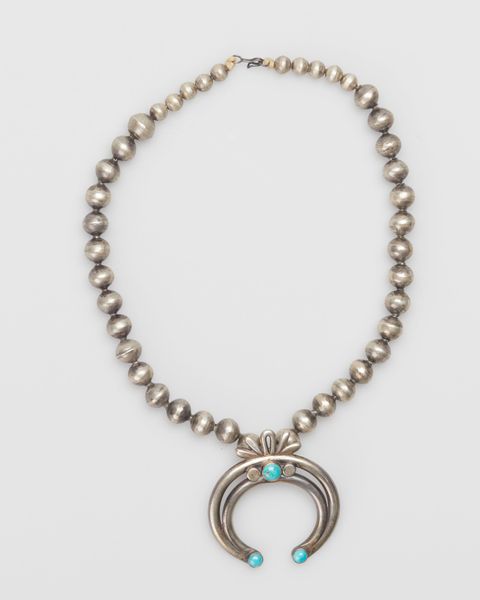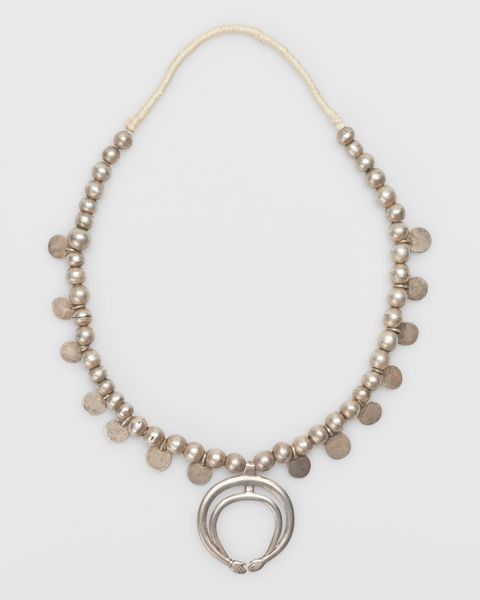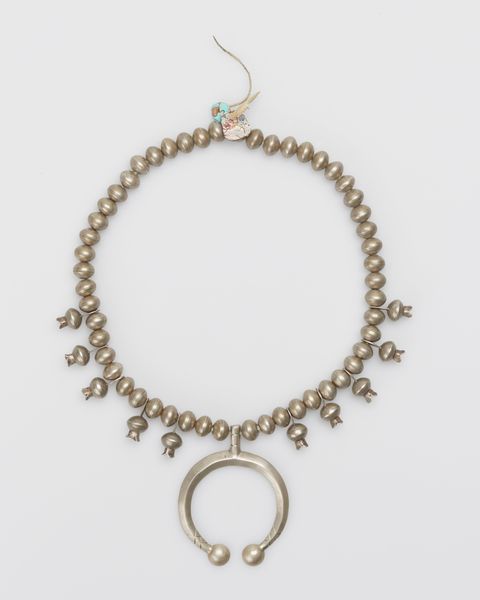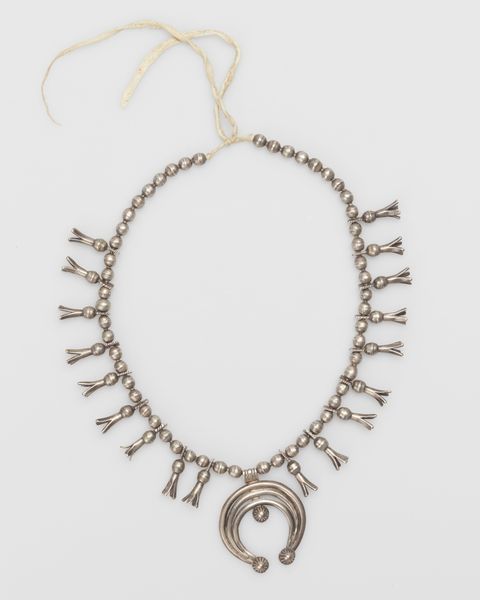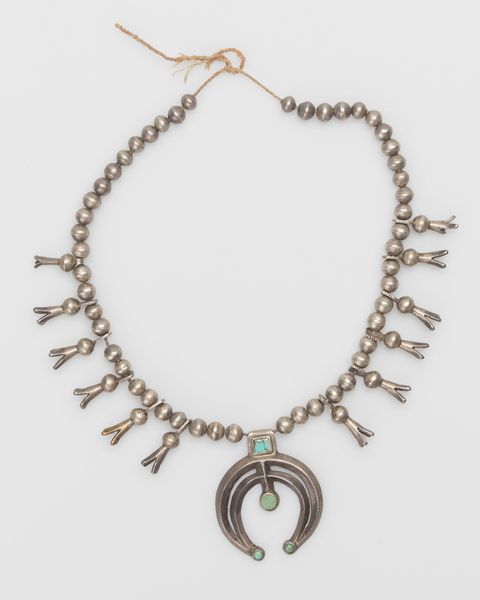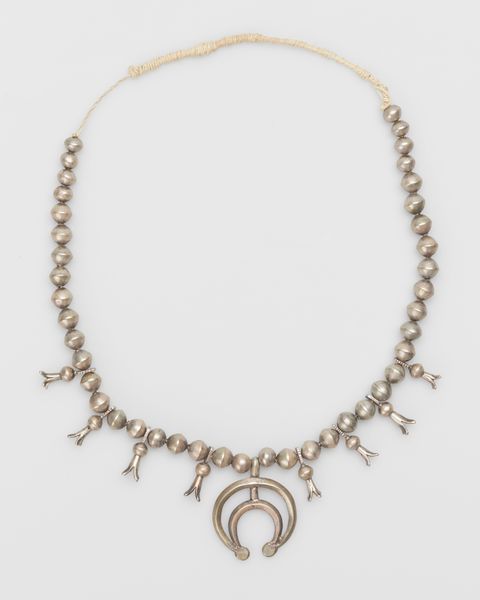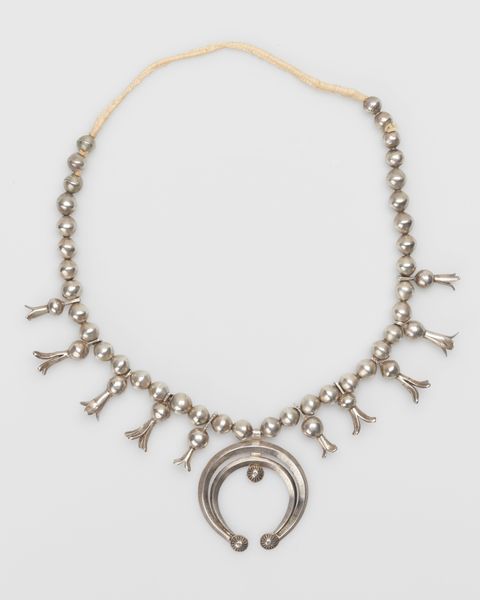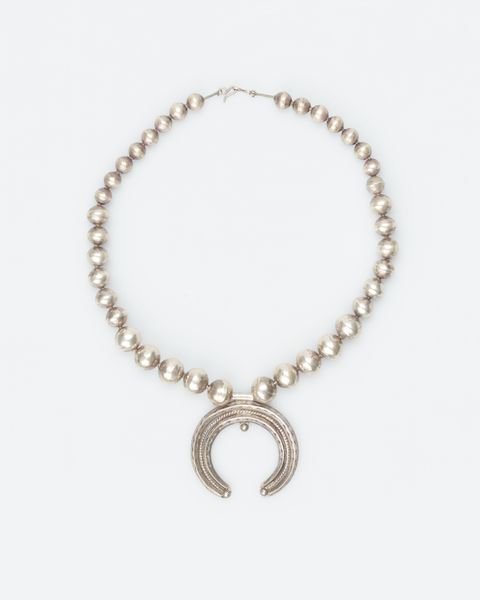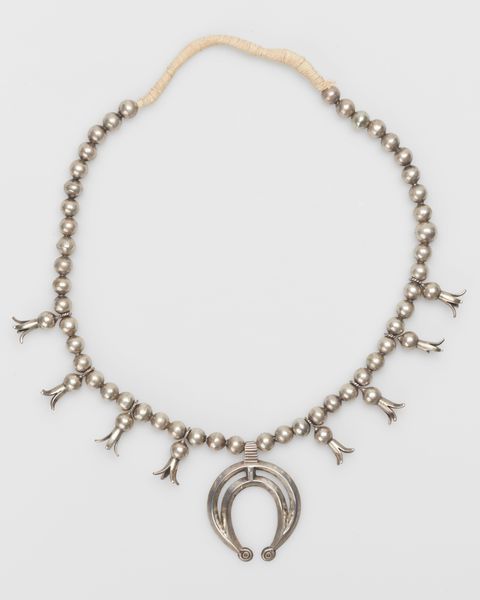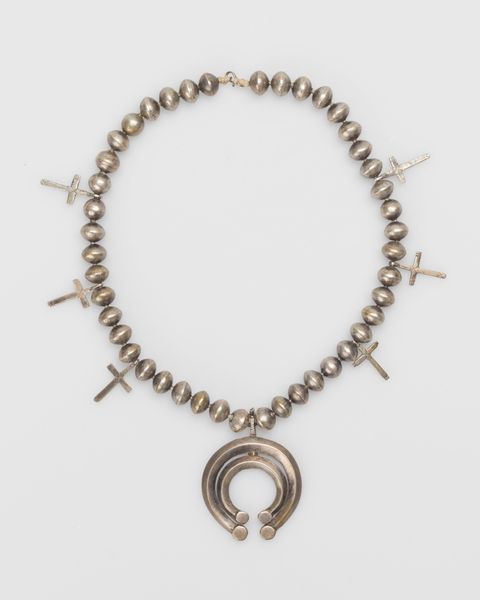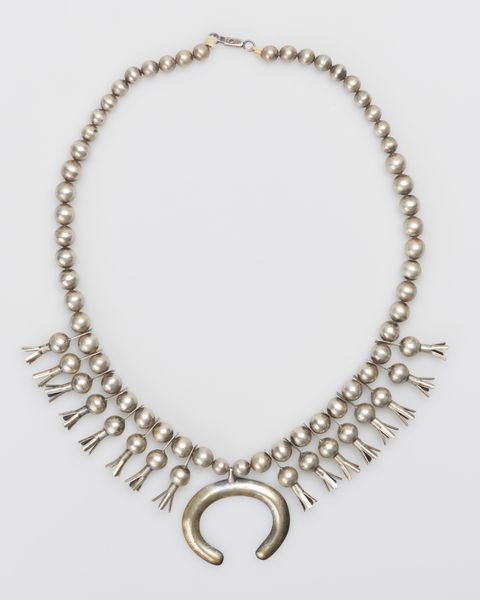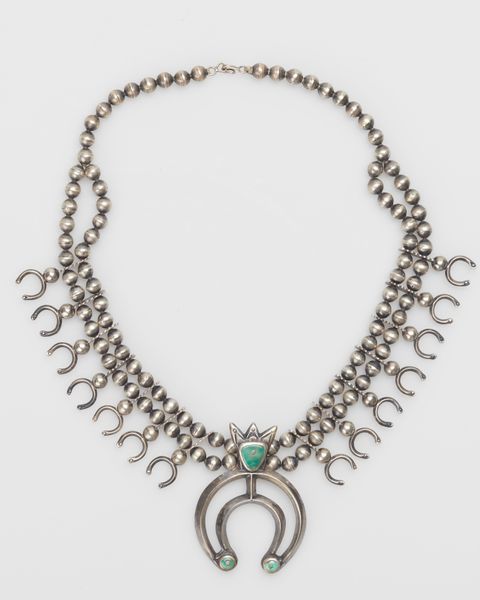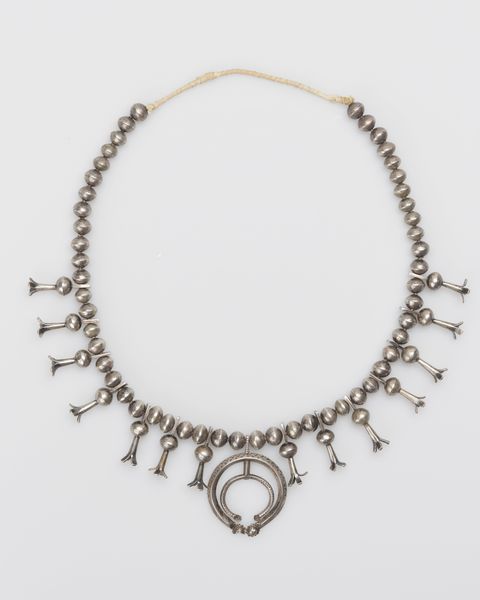
silver, metal
#
silver
#
metal
#
indigenous-americas
Copyright: Public Domain
This necklace, crafted by a Navajo (Diné) artist, features a striking 'naja' pendant hanging below a string of beads. The naja, a crescent-shaped symbol, carries deep cultural significance as a protective amulet. This symbol is often seen in the equestrian traditions of early Mediterranean cultures, where the crescent shape was believed to ward off evil spirits. Similarly, it's resemblance to the horseshoe reflects beliefs about attracting good luck and preventing misfortune, resonating across disparate cultures and eras. These beliefs can be traced back to our innate psychological inclination to seek symbols of protection, offering a sense of control in a chaotic world. The naja, with its enduring presence, speaks to the subconscious desire for safety and assurance that transcends generations. The hands suggest a protective spirit. A psychological interpretation of the naja might suggest a regression to a childlike state, seeking protection from unknown fears, mirroring the universal human experience of vulnerability and the need for security. Thus, the naja persists, transforming yet retaining its essence as a timeless emblem of defense and wellbeing, a symbol deeply embedded in our collective psyche.
Comments
No comments
Be the first to comment and join the conversation on the ultimate creative platform.
